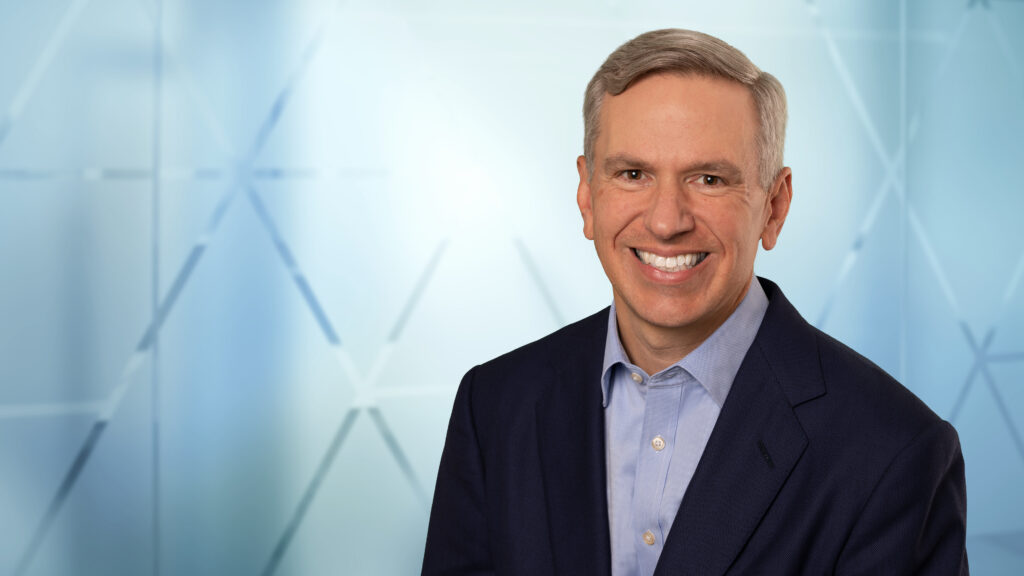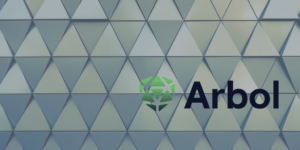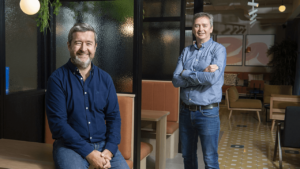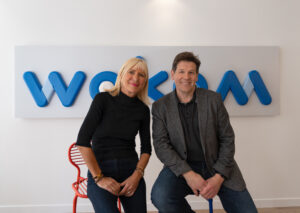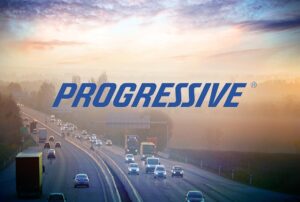With his impressive financial background credentials (Nasdaq, Inc.’s Executive Vice President and CFO, and other leading roles at Bank of America and Merrill Lynch) Shavel has modernised Verisk’s corporate financial operations.
His strategies overhauled treasury, investor relations, and procurement, and he has grown the company’s relationships with debt and equity investment communities, including buy-side institutional investors and sell-side research analysts. He also implemented an enhanced capital discipline process for internal and external capital deployment, extending that philosophy to the company’s operating focus as CEO.
But it’s not just about driving an efficient business. For the past three years, Verisk has been listed as one of the UK’s ‘Best Workplaces’ by ‘Great Place to Work’. It is also certified by Great Place to Work in the United States, Spain, Poland and India, and was honoured on the Best Workplaces lists in Málaga and named one of the 2022 Best Workplaces in New York by Fortune magazine.
How does he do it? We caught up with him to find out more.
You are CEO of one of the world’s leading data analytics operatives – at a time when technology, data and innovation has never moved so fast, or been in such high demand. How would you describe your role right now?
It’s an exciting time, and I feel incredibly privileged and honoured to lead such a great organisation that has been and continues to be a vital partner to the global insurance industry. Our centrality and scale uniquely position us to help the industry adapt to the rapid digitalisation trends while also helping it address its biggest challenges. We have the ability to invest in data, technology and innovation at a greater scale to benefit the industry as a whole. That’s a tremendous responsibility that we have.
Part of my role, and the role of the Verisk leadership team, is to make sure we are connecting with CEOs, CIOs and other C-suite leaders of our clients to understand how to serve their individual organisations better but also identify common challenges they face collectively and explore opportunities to innovate on behalf of the industry. If we can successfully address industry challenges, we believe it can benefit the entire insurance value chain, including policyholders.
You spent many years in the banking and financial space, and joined Verisk as its CFO. Now, as CEO, how has your previous experience shaped your thinking/strategies?
For much of my career, I worked in a client-facing role. I worked as an investment banker focused on advising companies on capital raising and M&A, as well as helping them leverage technology to modernise and digitise their businesses. Those prior roles required developing client relationships, listening intently to their needs and goals, understanding changes coming in their industries and providing trusted advice. I bring that same client-focused approach to my new role.
At Verisk, we have a tremendous opportunity to engage our clients and the industry more effectively to help them meet their strategic goals. So, engaging more closely and frequently with our clients as they embark on their digital transformation journeys are a key aspect of how we operate going forward.
As we move increasingly swiftly into a technology-driven future, how do you, as a leader, make sure your teams stay cohesive and productive, despite the changes?
Our industry has been experiencing this technology-driven change for over a decade, and it’s only accelerated in the past few years. For us, the key to navigating any change – whether it’s technological, economic or organisational – is maintaining our focus on our clients and ensuring that we’re listening to them and delivering value to them. I believe when we deliver value to our clients, then we also deliver value to our shareholders and our teams. Another vital aspect of maintaining cohesion and productivity during times of change or disruption is having a set of core values that drives your organisation.
At Verisk, we didn’t develop our core values in the boardroom or from a consultant but rather through conversations, engagement surveys and focus groups of employees throughout our organisation. We let our team members communicate the values that drive us. And those values, which are learning, caring and results, keep us focused on our clients and help us support one another as we innovate to help the industry and society become more resilient.
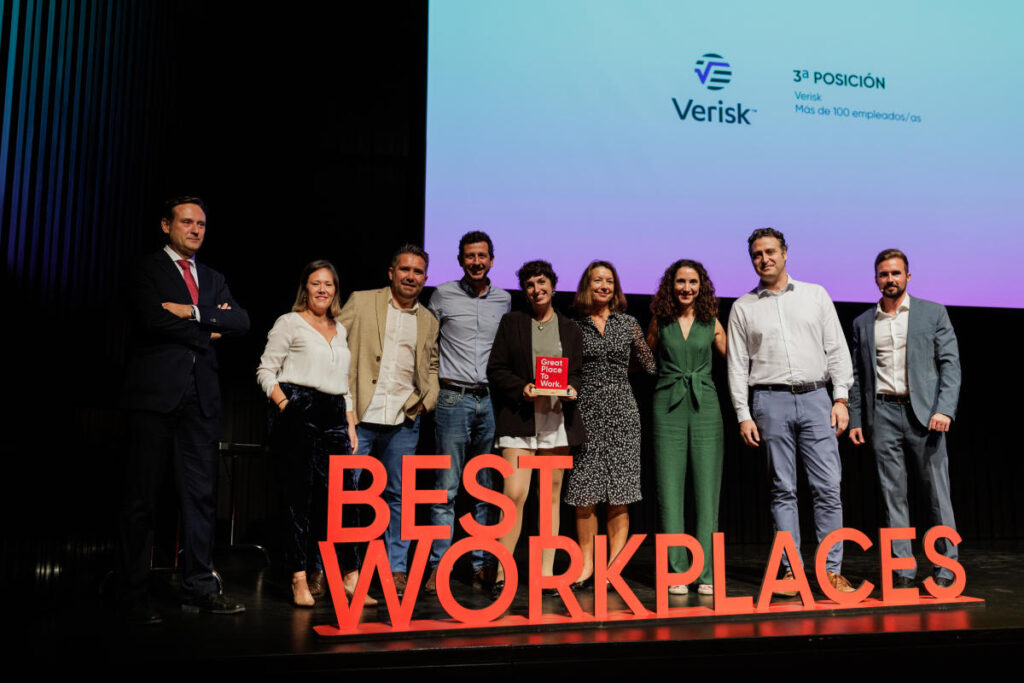
What are the biggest challenges facing the data analytics space today – and where do the best solutions lie?
Insurers have access to a large amount of data, and it’s only growing each year. We’ve seen the expansion of data sets through telematics, aerial imagery, social media, photo estimatics, IoT and mobility data. We’re also seeing better connectivity between data sets and various parties sharing that data because of the cloud. One of the challenges insurers face is sifting through all that data to ensure it’s high quality and relevant so it can inform their decisions. There’s a need to not only collect data, but also to cleanse it, assess its currency and reliability, and analyse it to gather actionable insights.
Another challenge is bringing data insights forward to make faster decisions to enhance efficiency and the customer experience. For example, when a homeowner wants a policy quote, they generally have to provide data such as the age of the home, age of the roof and the square footage. Not only is this self-reported data potentially inaccurate, it also creates friction for the customer. We help clients bring that data forward, where insurers can assess the information they need automatically without requesting it from customers.
This capability has been around for some time for personal auto lines, and now we’ve been able to do the same for home and small commercial with our Lightspeed solution, where with just a name and an address, carriers can provide a reliable and a bindable quote.
What’s your opinion on AI – both narrow and general – and its potential for good/consequence – as well as proposed regulations?
Generative AI has certainly been creating a lot of buzz and for good reason. We believe this technology has tremendous potential and can bring exciting advancements to the industry through greater efficiencies and new products. But we also recognise its potential risks, particularly the liability exposures it can present.
Verisk has an established ethical AI policy that helps inform the development of many of our products that use technologies such as machine learning and predictive analytics. Recently, we created a policy on generative AI that guides our teams in exploring the technology for possible use cases and how it can enhance our solutions. But innovation also requires responsibility. We remain steadfast in our commitment to safeguarding the integrity, confidentiality and responsible use of data and preserving our trusted reputation as ethical stewards of industry data. So, we see AI as a great opportunity that must be leveraged responsibly.
What projects are on the horizon for Verisk over the next 18-24 months?
One of our major projects is digitising our core loss costs, rules and forms platform. We’re creating a digital portal where clients can get any information they need about a line of business, whether from Verisk or other sources. In our catastrophe modeling business, we’re continually introducing new models for different perils and regions.
We recently released an inland flood model for Italy and an earthquake model for the Middle East, and you can expect more models in the coming years. In our claims business, we recently released an image forensics tool that helps identify fraud in loss images, and we’re continuing to
integrate more data sets and work with industry partners such as LIMRA, the NICB and CCC to deliver our anti-fraud solutions throughout the insurance ecosystem.
We’re also focusing on integrating our various products and data sets more effectively across businesses and functions, ensuring greater connectivity with the ecosystem. For example, we’re already bringing claims data from our Xactimate platform into our underwriting solutions for more accurate pricing and better aligned insurance-to-value.
If you could solve one problem in the insurance industry with a click of your fingers, what would it be and why?
If you asked most leaders in insurance companies that question over the past year, I believe many of them would say inflation. While it’s moderated somewhat, it’s still affecting profitability and auto lines in particular are still seeing increases in repair costs, which is driving claim severity.
With inflation in general, prices tend to remain high and level instead of receding. Social inflation is another concern I often hear from CEOs. It’s affecting personal and commercial auto as
well as liability lines and is being fueled by third-party litigation funding. If you group economic and social inflation together, and eliminate those challenges, the industry would be in a better position.
What inspires you in insurtech today?
Opportunities for greater collaboration throughout the industry continue to inspire me. We understand that carriers compete on different products, but I’ve been encouraged by their willingness to come together and discuss common industry problems and how data and technology can address those challenges. There is a lot of exciting and innovative technology that the industry is starting to explore. And I’m inspired by the relationships and partnerships we’re forming with other technology players to deliver greater efficiencies for the insurance ecosystem through that technology.
We have more than 200 ecosystem connections with integration partners. That includes core policy and claims administration systems as well as solution and data providers our clients use. It’s all about creating greater connectivity and greater value for our clients, who in turn, can create a better experience for their customers. The progression toward a better-connected ecosystem is what truly inspires me.
Join Verisk experts at ITI USA 2023
To find out more about Verisk’s latest strategies and innovations, join their panel of experts at Insurtech Insights USA 2023 on June 7th and 8th, at the Javits Center in New York. Verisk’s speakers at the event are:
- James Roche, VP Product Management, Verisk Insurance Solutions
- Jeff Piotrowski, VP, Insurance, Verisk Marketing Solutions
To find out more, click here

